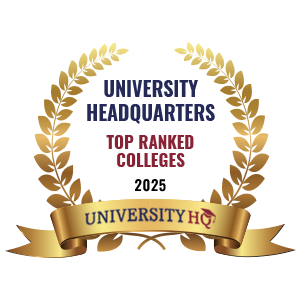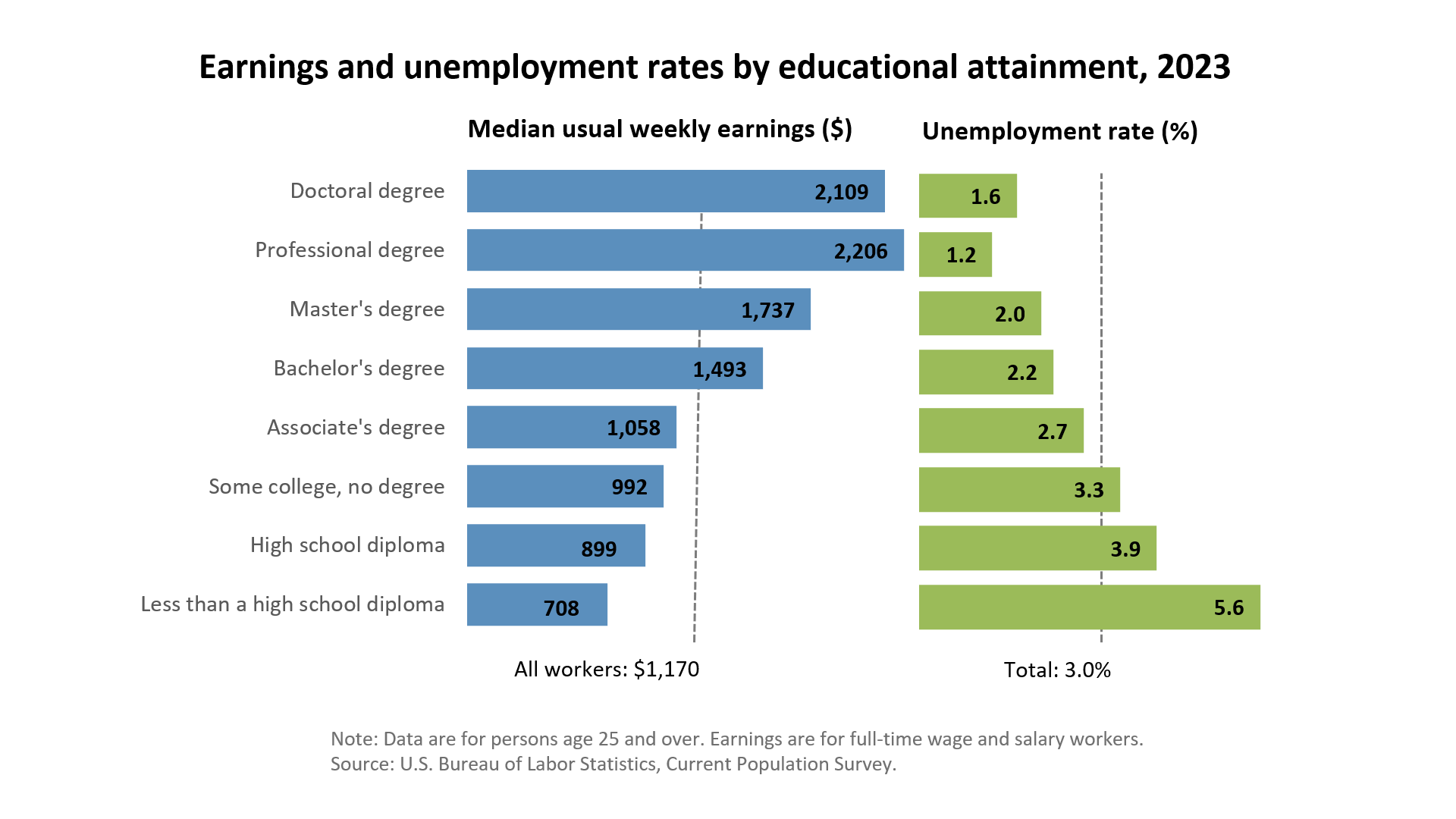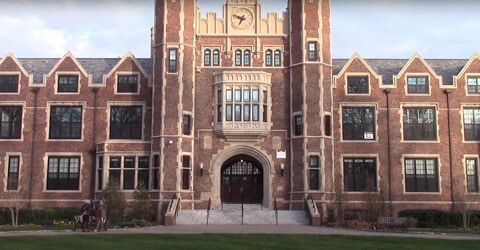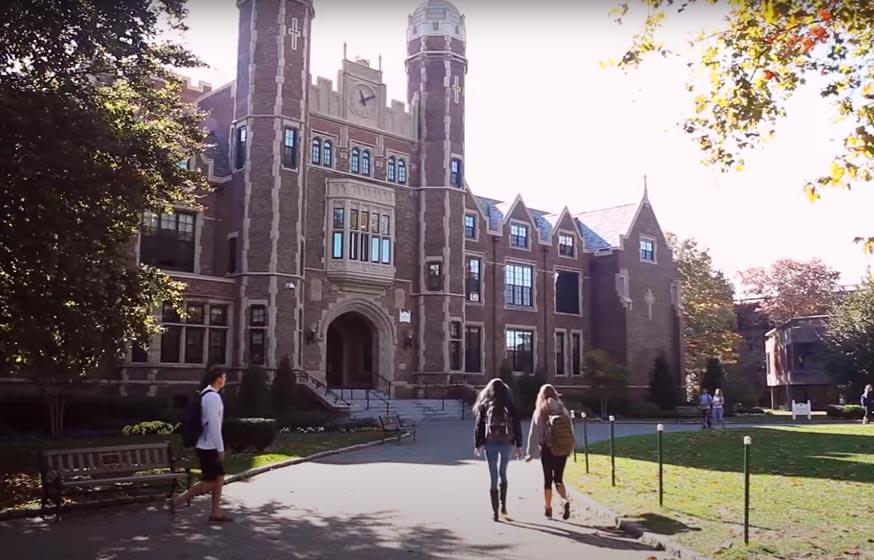Get Matched With Online Colleges
Wagner College is located in Staten Island, New York and is a private liberal arts school. Founded in 1883, Wagner has an enrollment of 2,200 and is famous for the Wagner Plan for the Practical Liberal Arts. The campus is comprised of 110 acres in an urban setting and its close proximity to New York City makes it an ideal location for exploring all the city has to offer during your free time.
Search All Programs
Overview of Wagner College
The most popular programs at Wagner are in the health professions, with a full one-third of students enrolled in health associated degree programs. Wagner also offers eight graduate programs, half of which are related to the health fields. Undergraduates are also allowed to take graduate level courses, so you can customize your education to take the best path for your personal career goals.
About two thirds of students live on campus, so the social scene is much like living in a small town. Over 60 different organizations and clubs make it easy to find students with the same interests, so you should find it relatively easy to make new friends once you settle into campus life. The Wagner College Alumni Association will provide you with connections worldwide and prove invaluable once you enter your career field of choice.
General Information
| School Type | Private not-for-profit |
|---|---|
| Campus Setting | City: Large |
| Campus Housing | Yes |
| Student Faculty Ratio | 15:1 |
| Graduation Rate | 71% |
| Year Founded | 1883 |

Student Enrollment
Total Students2,218
1,769
449
Undergraduate Student
Male 619
Female 1,150
Graduate Student
Male 157
Female 292
Explore Map
Top Rankings For Wagner College
Admissions
APPLICATIONS2,809
ACCEPTANCE1,994
Acceptance Rate71%
Enrollment 419
| Admissions | |
|---|---|
| Application Fee | $60 |
| High School GPA | Required |
| High School Rank | Required |
| High School Transcripts | Required |
| College Prep Courses | Required |
| Recommendations | Required |
| SAT/ACT | Required |
| TOEFL (Test of English as a Foreign Language) | Required |
| Application Deadline | December 15 |
| Common Application Accepted | Yes |
Tuition Cost & Financial Aid
The cost of college can range widely, but don’t let the initial price eliminate a school just because it’s expensive. The net price of attendance is the listed cost minus financial aid and many students find much or all of their college costs covered. Your first financial step should be to complete Free Application for Federal Student Aid (FAFSA), which is used by all schools as well as grants, scholarships, and federal loan applications. If money is a concern, you should set aside several hours a week to find and apply for any grants and scholarships you might qualify for, as your diligence could pay for most or all of your education costs.
| Average net price | 2018-2019 |
|---|---|
| Net Price | $32,294 |
| Average Total Aid | $28,357 |
| Students Receiving Financial Aid | 100% |
| Room & Board | $14,575 |
Sticker Price
- Tuition In-State - $48,280
- Tuition Out-of-State - $48,280
- Books and Supplies - $871
- Room & Board - $14,575
- Other - $2,447
Academics
When choosing a college, it’s important to look at the big picture as well as the degree programs offered. Look for the following information as indicators of how supportive a school is in helping students achieve their educational goals once enrollment is complete.
- Retention Rate: The retention rate is the number of students who return for their second year and can be an indicator of satisfaction or dissatisfaction within the student body.
- Graduation Rate: The graduation rate will give you an idea of how many years you should plan to dedicate to earning your degree and how supportive the school system is for undergraduates.
- Student-to-Faculty Ratio: A lower number here indicates more personalized teaching and a larger number may indicate the school is quite competitive in academic subjects.
- Student Population Total: Smaller totals may indicate more personalized classes, while larger numbers may indicate more extracurricular advantages and offerings outside of the classrooms.
- Distance Learning: Look for this option when choosing a school, as it can be vital if you have a change of plans and cannot attend one or more classes in person.
- Accreditation: Accreditation shows the school meets or exceeds national standards and is also a standard requirement for most types of financial aid.
Retention
Rate
4 year
Graduation
Rate
6 year
Graduation
Rate
Student Population Total
Student Population 2,218
1,769
449
Most Popular Programs & Majors
(# of Diplomas Awarded by Subject)
| Health Professions and Related Programs | 167 Total Graduates / 38% |
|---|---|
| Registered Nursing/Registered Nurse | 130 Graduates |
| Physician Assistant | 37 Graduates |
| Visual and Performing Arts | 84 Total Graduates / 19% |
| Drama and Dramatics/Theatre Arts, General | 44 Graduates |
| Fine and Studio Arts Management | 31 Graduates |
| Cinematography and Film/Video Production | 5 Graduates |
| Art/Art Studies, General | 2 Graduates |
| Music, General | 2 Graduates |
| All Business Majors | 59 Total Graduates / 14% |
| Business Administration and Management, General | 59 Graduates |
| All Social Sciences Majors | 28 Total Graduates / 6% |
| Sociology | 10 Graduates |
| Political Science and Government, General | 7 Graduates |
| Anthropology | 4 Graduates |
| Economics, General | 4 Graduates |
| All Biological & Biomedical Majors | 22 Total Graduates / 5% |
| Biology/Biological Sciences, General | 14 Graduates |
| Microbiology, General | 8 Graduates |
| All Other Diplomas | 17% |
Outcome & Salary
Upon graduation from Wagner, you can expect an early-career average salary of $58,100 and graduates have an average mid-career salary of $105,900. When you compare these figures to the national average salary of $38,792 for those with no college degree, it’s easy to see why college is an excellent investment.
In the long run, your return on investment (ROI) for your Wagner degree should prove lucrative. When you subtract the cost of your education, you’ll see a 10-year potential ROI of $774,830 and in 20 years this increases to $1,833,830, much higher than those with no degree. Although they had no college expenses, their average 10-year projected income is only $387,920, less than half of graduate’s. Note that these numbers are based on an undergraduate degree; those who continue to the master’s or doctoral level generally enjoy much higher salaries.
| Graduates Salary | |
|---|---|
| College Grads Early Career Salary | $58,100 |
| College Grads Average Salary | $77,483 |
| College Grads Mid Career Salary | $105,900 |
| Return on Investment (ROI) | |
|---|---|
| 10 Year Salary Earnings Potential | $774,830 |
| 20 Year Salary Earnings Potential | $1,833,830 |
| Cost of Education (Net Price) 4 Year | $129,176 |
| 10 Year Projected ROI | $645,654 |
| 20 Year Projected ROI | $1,704,654 |
| No College Education Salary Comparison | |
|---|---|
| National Average Salary | $38,792 |
| 10 Year Projected Income | $387,920 |
| 20 Year Projected Income | $775,840 |

Related Top College Resources








